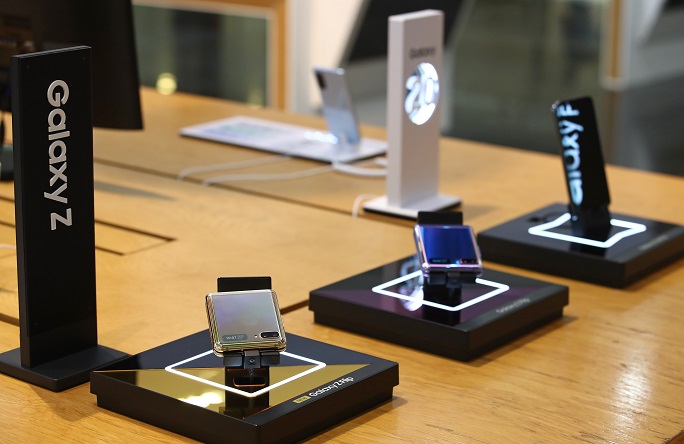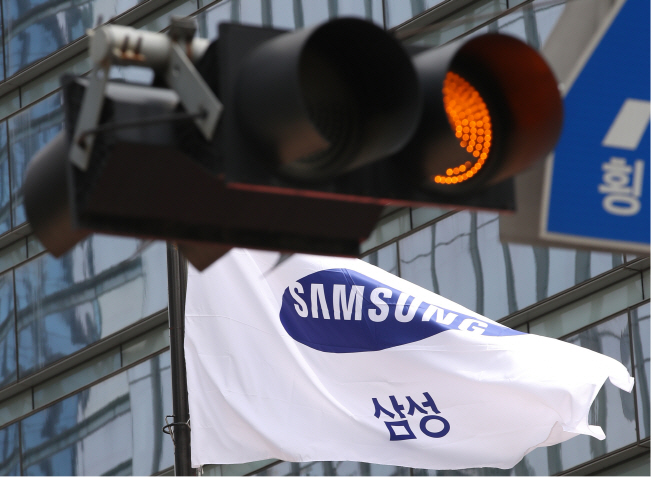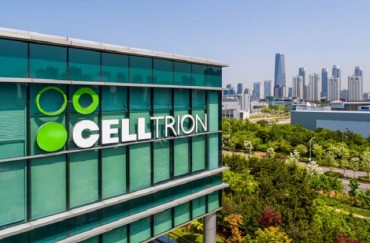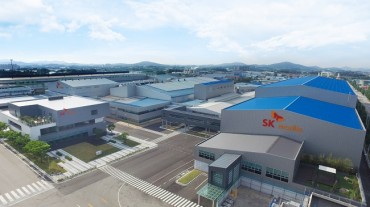SEOUL, Oct. 28 (Korea Bizwire) — Samsung Group, South Korea’s top conglomerate, has ushered in a new leadership following the passing of its longtime chief Lee Kun-hee, but daunting tasks lie ahead for the tech titan, from a possible governance structure change to fierce challenges from its foreign rivals.
Lee, one of most influential businessmen in the country’s post-war era, died Sunday at age 78, wrapping up his 33-year reign of the world’s top smartphone maker and memory chipmaker.
His eldest scion and only son, Jae-yong, is widely expected to come to the fore in the group management, though the heir has been already recognized as the de facto leader since his father collapsed in 2014 due to a heart attack.
Jae-yong, currently Samsung Electronics vice chairman, is now tasked with leading the conglomerate with a new vision without his father, but his mission to help Samsung take a leap forward will not be easy amid uncertainties.
The 52-year-old Lee first has to deal with trials that could put him in prison again.
Jae-yong was indicted last month for his alleged role in a controversial merger and fraudulent accounting related with his succession.
Prosecutors suspect that Jae-yong and the group’s top management were involved in a calibrated scheme to intentionally lower the value of Samsung C&T Corp. prior to its merger with Cheil Industries Inc. in 2015 so as to facilitate his managerial succession from his father.
He is also up against another round of trials in a corruption case that led to the ouster of former President Park Geun-hye. He already served around a year in prison for the case.
Jae-yong was released in February 2018 after an appellate court handed him a suspended sentence, but six months later, the country’s top court ordered a review of the suspended sentence.

This photo provided by Samsung Electronics Co. on Oct. 22, 2020, shows Samsung Electronics Vice Chairman Lee Jae-yong (2nd from R) inspecting the company’s smartphone factory located near Hanoi, Vietnam.
While his legal battle likely to persist for years, Jae-yong also needs to come up with ways to have a better grip on the group’s control that could spark possible governance structure changes.
Industry insiders estimate that the family of the late Samsung chief will pay more than 10 trillion won (US$8.85 billion) in inheritance tax for Samsung shares owned by the late Lee.
To finance the hefty tax, Jae-yong and his family could sell some of their stakes in Samsung affiliates.
Jae-yong currently controls the group with a cobweb-like ownership structure linking Samsung C&T, Samsung Life Insurance and Samsung Electronics.
He holds only a 0.7 percent stake in the tech behemoth but controls Samsung Group through his grip on Samsung C&T with a 17.33 percent stake.
But a bill designed to limit stock holdings in affiliates by an insurance firm could break that ownership structure.
Under the bill proposed by ruling party lawmakers, the value of stocks in affiliates held by an insurance company should not exceed 3 percent of its total assets, and such stock value should be calculated with market prices.
The bill, if passed, would force Samsung Life Insurance to unload the bulk of its stake in Samsung Electronics, which could in turn reduce Jae-yong’s grip on the tech firm recognized as the group’s crown jewel.
From the business perspective, Jae-yong needs to oversee a groupwide strategy in the post-pandemic era and explore its future growth engines.
The group currently has 59 affiliates covering almost every business area, including electronics, construction, shipbuilding, finance and even an amusement park.

This photo provided by Samsung Electronics Co. on May 21, 2020, shows the company’s chip plant in Pyeongtaek, south of Seoul.
Industry observers expect Samsung to make big investment and acquisition deals in the future to signal that the conglomerate is moving toward a new goal set by Jae-yong.
Between 2014 and 2015, Samsung streamlined the group’s business portfolio, selling its chemical and defense units to Hanwha Group and Lotte Group. In 2016, it acquired U.S.-based automotive giant Harman International Industries.
Though such major deals have not been made since 2016, Samsung did announce big investment plans.
In August 2018, the group announced it would invest 180 trillion won over the next three years to revitalize the national economy and foster new growth engines, emphasizing that 130 trillion won, or 72 percent, will be allocated in South Korea.
Observers said Samsung Electronics, in particular, will try to further widen its gap with rivals under Jae-yong’s reign. The company is currently the world’s largest memory chip, smartphone and TV vendor.
Jae-yong’s leadership is also put to the test at a time the global chip and smartphone markets are bracing for new business environments amid the COVID-19 pandemic.
SK hynix Inc., the world’s No. 2 memory chip producer, recently announced a $9 billion deal to acquire Intel Corp.’s NAND flash business to catch up to Samsung Electronics.
In the smartphone sector, the South Korean tech firm briefly lost its status as the world’s top vendor to Huawei Technologies Co. earlier this year before the Chinese tech titan was hit by U.S. sanctions over security issues.
With its traditional rival Apple Inc. also releasing its first 5G-supporting smartphones this month, market researchers have warned that Samsung’s presence in the smartphone market may not be strong like in the past.
When it comes to discovering new growth engines, Samsung Electronics has been seeking to expand its presence in the non-memory sector and the 5G network equipment market.

This photo taken July 7, 2020, shows Samsung Electronics Co.’s foldable smartphones displayed at a store in Seoul. (Yonhap)
Last April, Samsung Electronics unveiled a vision to become the world’s No. 1 logic chip maker by 2030 by investing 133 trillion won and bolstering its competitiveness in the system LSI and foundry businesses.
Samsung Electronics is currently the No. 2 player in the foundry market behind Taiwan Semiconductor Manufacturing Co. (TSMC), which boasts more than a 50 percent market share.
In the 5G network equipment market, Samsung is ranked fourth behind Huawei, Ericsson and Nokia.
Samsung could make big investments in electric vehicle (EV) and mobility businesses in the future, possibly collaborating with other automakers.
Earlier this year, Jae-yong had meetings with Hyundai Motor Group chief Chung Euisun, who leads South Korea’s largest automaker.
Samsung currently manufactures EV batteries thorough its subsidiary Samsung SDI Co.
Industry observers said it also will be interesting to watch how Jae-yong would change the corporate culture at Samsung following his compliance pledge.
Lee made a rare public apology in May over controversies surrounding his succession and vowed not to pass on the managerial power to his children.
He also promised to scrap the group’s “no labor union” policy and actively speak with civil society to enhance compliance culture.
Samsung in February launched an independent compliance committee to monitor its compliance actions.
(Yonhap)







